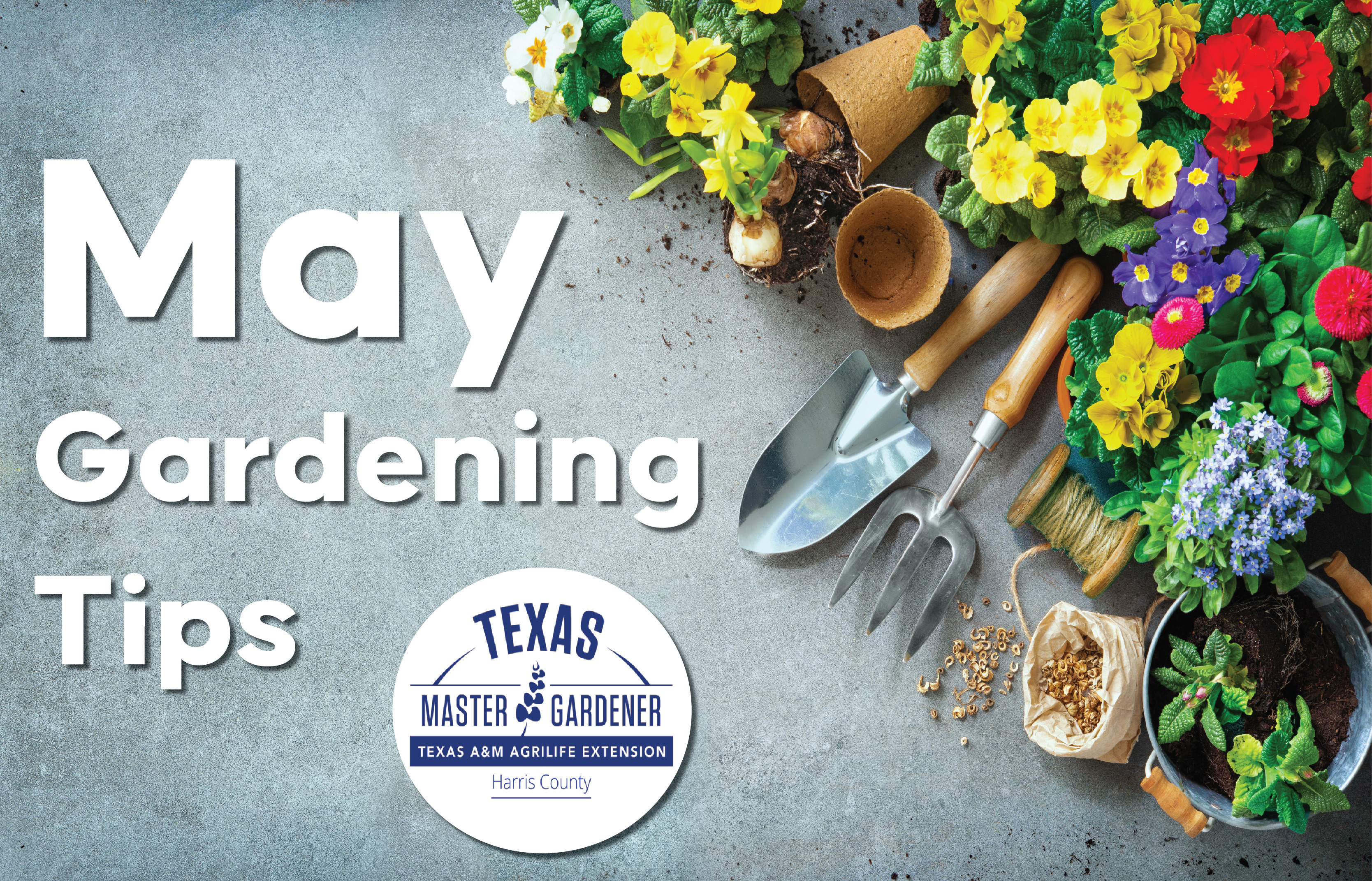
Harris County Master Gardener Shares Top Gardening Tips for May
This information has been generously provided to Harris County residents free of charge by the Harris County Master Gardeners, an expert group of trained volunteers assisting Texas A&M AgriLife Extension Service in educating the community using research-based horticultural information.
Did you know that the Harris County Master Gardeners offer free training, events and other resources all year round? To learn more, visit hcmga.tamu.edu.
By Karen Shook, Harris County Master Gardener
May reminds us why we need to get our gardening advice locally. While average temperatures in May/June are high 70's to low 80's deg F, daytime highs in the mid 90's are a reminder that summer has arrived in south Texas. A good layer (2 in) of mulch on your beds will help retain moisture and keep roots cooler.
Be alert for pests. They will be getting more active as the weather warms. Some pest damage is inevitable, but watch and limit (pick them off, spray them off). Not all insects are pests. Learn to recognize beneficial insects. There are plenty of websites with information; the link below is to a site I particularly like.
Hurricane season starts June 1. Now is the time to make sure trees are trimmed with no dead branches just waiting to fall in a heavy wind.
Perennials and Ornamental Grasses
- Continue deadheading (removing spent blossoms down to first set of leaves). As blooms decline, cut back perennials by 1/3 to help promote new growth. Fertilize and water after cutting.
- Fertilize irises after they finish blooming. Other perennials should be fertilized as needed. If plant is growing vigorously, with deep green leaves and plenty of blooms, it probably doesn't need to be fertilized. Ornamental grasses can be planted in the summer and will do well in the heat as long as they have adequate moisture.
Annuals
- Replace cool season annuals, which have likely declined, with warm season annuals. You can direct seed many warm season annuals if you make sure they have enough water.
- Cut back when blooms decline to encourage new growth. Fertilize as needed, usually every 4 to 6 weeks.
Bulbs
- Cut back yellow foliage of spring flowering bulbs. But not until the yellow or brown color tells you the bulbs have replenished stored reserves. Dig and reset the bulbs if desired.
- Seedpods that may form after summer bulbs bloom are a waste of the plant's energy. As you walk through your garden, remove the pods and old flower spikes. Fertilize actively growing bulbs and provide support for tall growing bulbs.
Roses
- In your morning garden rounds, cut some roses (to first leaf with 5 leaflets) to enjoy indoors.
- Continue to spray for blackspot, powdery mildew, aphids, etc. every 7 to 10 days through Nov. Decreased foliage from blackspot or powdery mildew reduces bloom potential. Keep the beds cleaned of any leaves that yellow and drop.
- Fertilize every 4 to 8 weeks depending on health of the rose.
Shrubs/Trees
- Prune spring flowering shrubs, trees, and vines after they finish flowering. Spring blooming azaleas should be pruned by early June.
- Plant palms in summer's warm and wet months.
Lawns
- Frequent mowing (to make sure you only remove 1/3 of height each mowing) at proper height for your type of lawn is good way to increase lawn density which helps choke out weeds.
- Check the label if you are tempted to apply weed killer. Many can damage the lawn if temperatures are high.
- New sod needs water 15 min/day for a week (rain counts). Keep it moist.
- Fill low areas with soil similar to native soil.
Edibles (vegetables, herbs, berries, fruits)
- Enjoy your harvest!
- You can still plant heat tolerant okra, southern peas, sweet potatoes. Soak the area before planting.
- See the following link for recommended planting times: Harris County Vegetable Planting Guide
Groundcovers and Vines
- Dig and divide established ground covers in May. Tough ground covers like Asian jasmine should be okay if planted in June.
- Most woody vines bloom in the spring. Prune spring flowering vines after they finish flowering. Snip back, wind vines through support to keep them looking neat.
Want to go deeper? Visit the Harris County Master Gardeners' Urban Dirt Index for a plethora of information about gardening in your region at hcmga.tamu.edu/urban-dirt-index. Submit your horticulture questions to the Harris County Master Gardeners at hcmga.tamu.edu/ask-a-question.
Source: Harris County Master Gardeners


